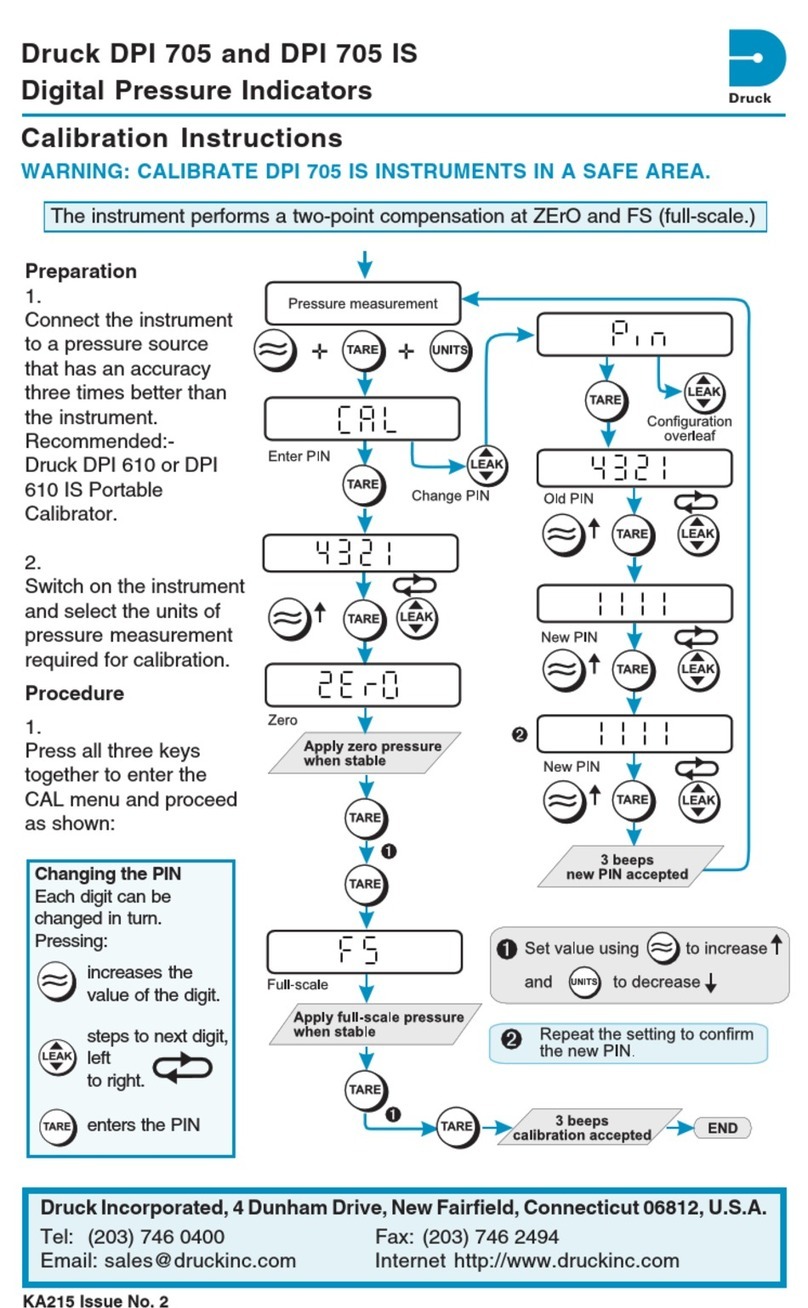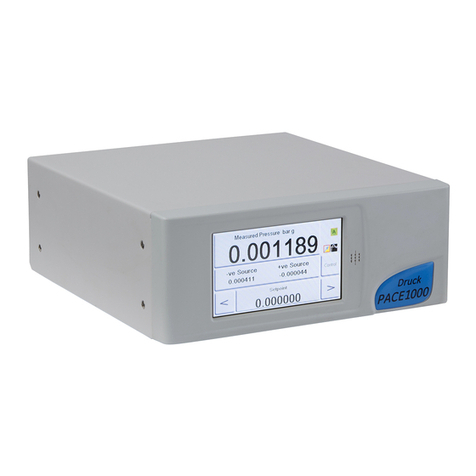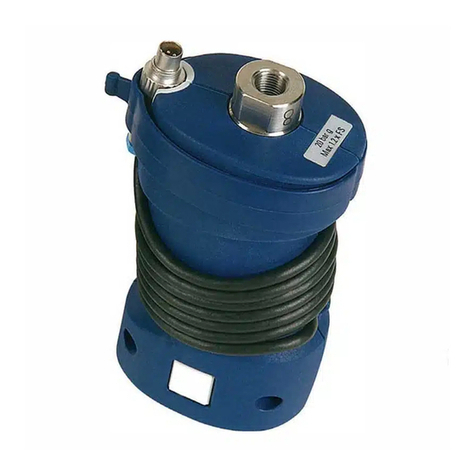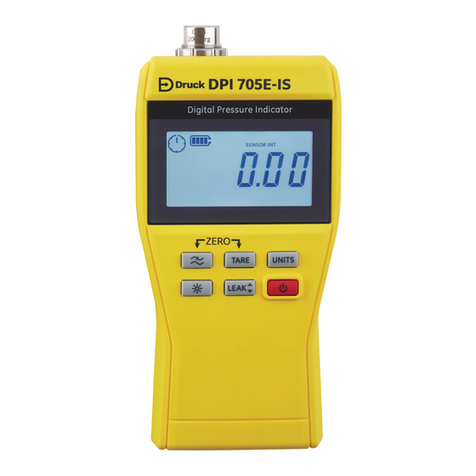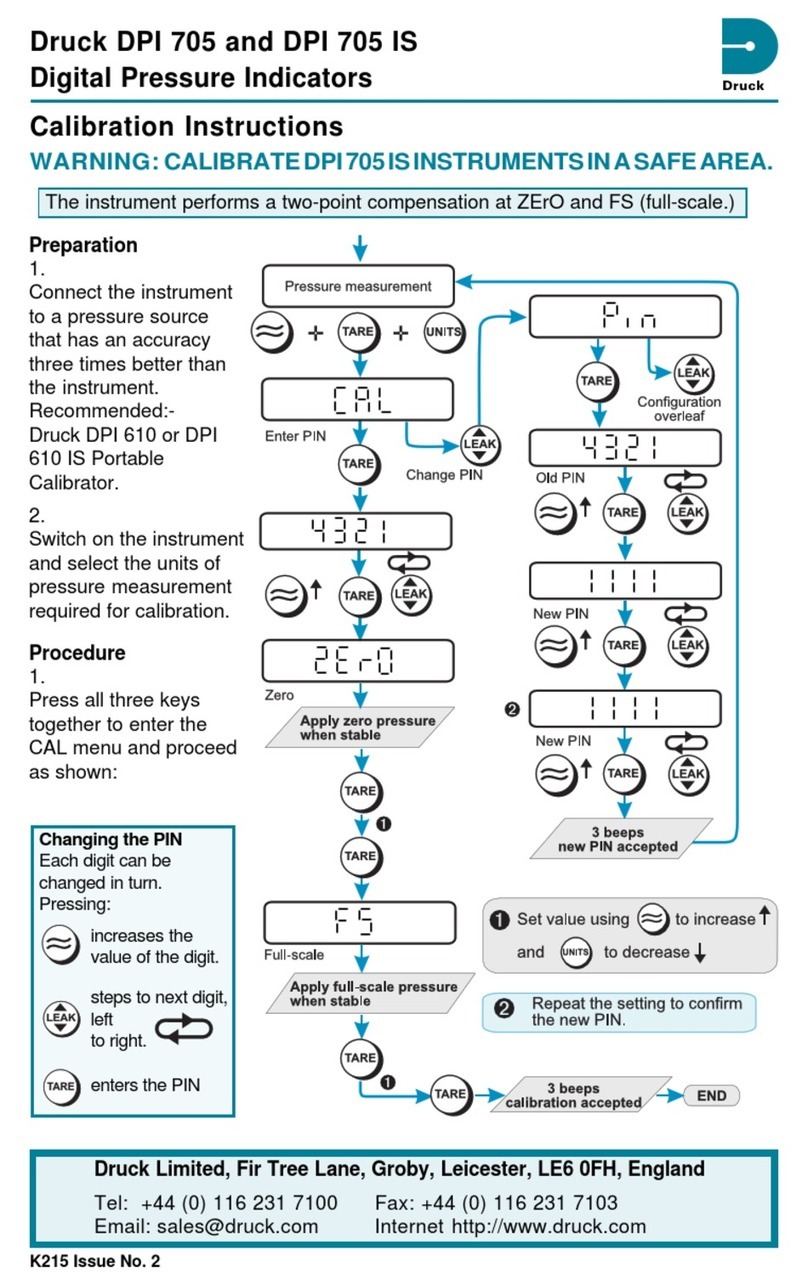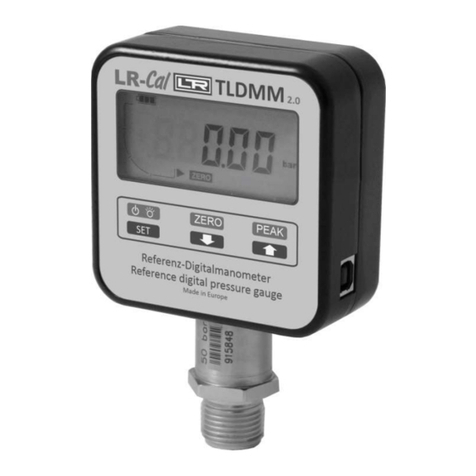
Copyright 2003 Baker Hughes Company.
English–DPI 800/802 Instruction Manual | 1
Introduction
The DPI 800 Pressure Indicator and DPI 802 Pressure Loop Calibrator are part of the Druck
DPI 800 series of hand held instruments.
The DPI 800 series uses Intelligent Digital Output Sensor (IDOS) technology to give instant plug
and play functionality with a range of Universal Measurement Modules (UMM). Example: the
Universal Pressure Module (UPM).
The DPI 800/802 include these functions:
Safety
Before you use the instrument, make sure that you read and understand all the related data. This
includes: all local safety procedures, the instructions for the UMM (if applicable), and this
publication.
Function DPI 800 DPI 802
Measure pressurea
a. Refer to “Specification Data” on page 22.
Internal IDOS: P1 and/or P2b;
External IDOS: UPMb
b. Optional item
Measure pressure differencec
c. High range IDOS - Low range IDOS (if applicable)
Difference (∆) between: P1 and P2, or P1/P2 and a UPM
Leak test Yes
Communications port IDOS or RS232
Language selection Yes
Pressure units 25 (Fixed)
Snapshot ** Up to 1000 displays with a date/time stamp
Measure mA No 0 - 55 mA
HART® resistor No Yes
V dc output No 24 V
Switch test No Yes
Other functions Hold, Maximum/Minimum/Average, Filter, Tare, Scaled values,
Backlight, Alarm
WARNING Some liquid and gas mixtures are dangerous. This includes
mixtures that occur because of contamination. Make sure that the instrument is
safe to use with the necessary media.
It is dangerous to ignore the specified limits for the instrument or to use the
instrument when it is not in its normal condition. Use the applicable protection
and obey all safety precautions.
To prevent a dangerous release of pressure, isolate and bleed the system before
you disconnect a pressure connection.
Do not use the instrument in locations with explosive gas, vapor or dust. There
is a risk of an explosion.
DPI 802/802P only. To prevent electrical shocks or damage to the instrument, do
not connect more than 30V between the terminals, or between the terminals and
the ground (Earth).












